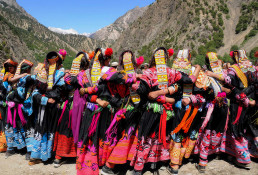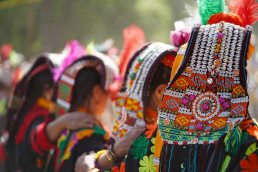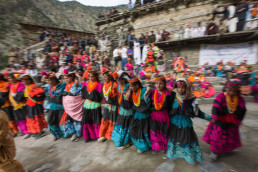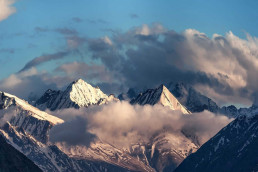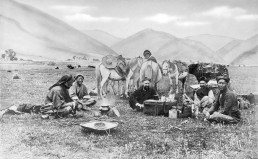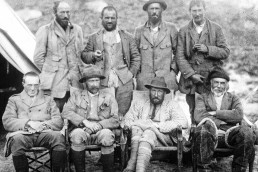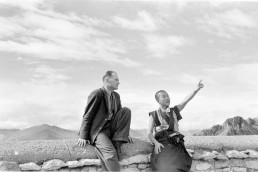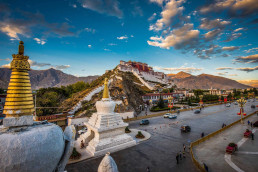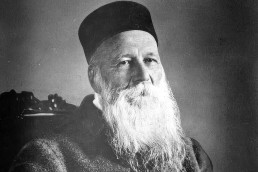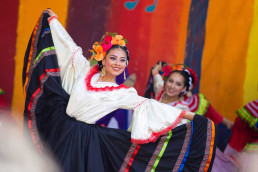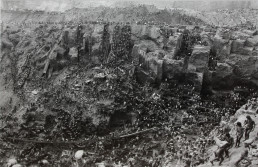Art of Observation: How Andre Zuardi Captures The Magic of Travel
Andre Zuardi’s lens captures more than just images; it conveys experiences. Andre has travelled to isolated parts of the world with Mahacaraka® – The Art of Travel, where he has captured encounters and feelings in stunning images. We sat down with Andre to see the world via his lens and learn tips for aspiring travel photographers.
“Travelling with Mahacaraka was a turning point,” Andre explains. “We went beyond the typical tourist destinations, discovering hidden gems. It was a cultural and historical immersion that had a profound impact on my photography. Andre emphasises the value of human connection in street photography. “Meeting other participants, particularly Sandy, The Leader of Mahacaraka® – The Art of Travel, sparked discussions about style and technique.” “It was an ongoing learning experience.”
So, how does Andre select his destinations? “Movies frequently ignite my travel spark,” he admits. “Upon arrival, I may seek for a scene from the film, but then I push myself to discover a fresh perspective. The idea is not to imitate, but to establish a new perspective.” Andre emphasises the importance of research as well. “Delving into a country’s history often leads me to ‘exotic’ locations, places waiting to be discovered through my lens.”
We asked Andre to contribute a photo that represents his inspiration. He points to New York City’s shot. It shot captures the essence of the city for me,” he says. “The iconic blue and white buses and the steam rising from tube grates – it’s a scene straight out of Scorsese’s Taxi Driver, yet it’s my own interpretation.” Andre’s ability to combine cinematic elements with his personal perspective is a defining feature of his style.
Andre believes that street photography is about freedom and capturing fleeting moments. “It’s the ability to observe and shoot without restrictions,” he states. “It’s about reacting swiftly to a circumstance that will never play out the same way again. I pick a captivating backdrop and then become an observer, looking for the right element to complete the composition.” Andre’s approach is similar to street casting, in which the photographer takes on the role of director, scouting locations and waiting for the perfect actors to materialise and bring the scenario to life.
Andre’s advise for prospective street photographers is simple: “Train your eye to observe, be quick to shoot, and resist the urge to constantly review your photos.” He emphasises the value of patience and mindfulness. “The best photos are often the ones you weren’t expecting, the moments that unfold organically when you’re fully present in the scene.” Andre’s concept extends beyond technical expertise; it is about building a sense of anticipation and attention while seeing the world unfold in front of your lens.
Beyond the interview, Andre’s fascinating images offer a visual voyage throughout the world. So, bring your camera, prepare for the unexpected, and let the world inspire your distinct vision.
From Panic to Peace: Bulletproof Backup Strategies for Travel Photographers
Photographers who love to travel see the globe as an endless canvas, full of interesting people, beautiful scenery, and precious moments just waiting to be caught. Photographers today depend on digital data, a considerably more fragile medium than the pen and paper used by seasoned explorers of yesteryear to record their expeditions.
A photographer’s work would not be possible without these digital files. They can carry us to far lands, evoke strong feelings, and recount the tales we meet on our journeys. But what happens if these important files get corrupted or lost?
An enormous shift has occurred in the way we save our picture archives. Photographers have long sought portable and dependable storage solutions, whether it be large film canisters or little memory cards.
Compact discs and heavy hard drives were challenges for the first digital photographers. Fortunately, there has been a dramatic improvement in storage capacities since the advent of the digital age. Travel photographers on the fly will love today’s memory cards because of their tremendous capacity in a little footprint.
Data loss is an ever-present risk, even with the best efforts of storage system developers. It only takes a corrupted card, a lost drive, or any technical issue to cause catastrophe. A solid backup plan is crucial in this situation.
A multi-pronged strategy is essential for photographers who specialise in travel. To begin, you should never be without extra memory cards. By alternating between cards while you shoot, you can reduce the likelihood of losing all of your photographs due to a failed card.
Secondly, establish a schedule for routine backups. Every day, make sure you have a backup of your images on a portable hard drive in case your camera’s memory cards ever have problems.
When it comes to data storage, cloud solutions provide an extra safeguard. A trustworthy cloud service allows you to make a duplicate of your images that is physically located in a different location from your original files. This might give you a sense of security in the event that anything unexpected happens, such damage to equipment or theft.
An immediate backup plan is critical, but so is a plan for archiving data for the future. Envision everything you put into photographing a breathtaking site being rendered useless as a result of file degradation or antiquated storage methods.
Think about implementing a strong archiving strategy to make sure your work stays. Discover formats and storage options that are built to last. Keep your files compatible by migrating them to new media on a regular basis.
The digital storage landscape is dynamic and ever-changing. More dependable and creative solutions will certainly appear as technology progresses. In comparison to conventional hard drives, solid state drives (SSDs) are more durable, have quicker read/write rates, and are becoming more inexpensive.
It can be beneficial for travel photographers to keep up with these innovations. Nonetheless, a tiered backup system, a focus on dependable storage, and a plan for long-term preservation are still essential for protecting your work.
By adhering to these guidelines, you can safeguard your priceless photographs and go on to photograph the wonders of the world without worry. Remember that these digital files include much more than just images; they are visual stories of your travels, meant to be passed down through the ages.
Love, Music, and Mountain Gods: Pakistan's Enchanting Chilam Joshi Festival
A compelling human narrative unfolds high in Pakistan’s Hindu Kush mountains, where snow-capped peaks break the clear blue sky. The Kalash people live here, in the steep valleys etched by time, a dynamic community with a fascinating history. Their origins are shrouded in mystery, and they continue to pique interest. Some stories hint at a link to the legendary Alexander the Great’s army, but others go further, implying an even older ancestry rooted in animistic beliefs. Regardless of their origins, the Kalash have cut a distinct path across this harsh terrain, retaining a way of life unlike any other in the region. Their unique language and adherence to a polytheistic belief system centred on deities such as the benign Goshidai distinguish them as a cultural island, demonstrating the continuing strength of tradition. Every year, as the severe winter fades and spring paints the valleys in a kaleidoscope of colours, the Kalash celebrate Chilam Joshi, their beautiful New Year festival.
The Chilam Joshi Festival, a four-day celebration of the Kalash New Year, takes place every year as spring arrives. Chilam Joshi, which takes place from May 13 to 16, is a brilliant riot of colour, song, and culture. This joyful event serves as a twin offering: a time to thank the gods for a bountiful crop and a venue for young Kalash men and women to meet potential life partners.
The festivities begin with a day of blessings. Known as “Milk Day,” families assemble to make milk sacrifices as a symbolic gesture to their deity, Goshidai, in exchange for livestock protection and a successful crop season. As the days progress, the air is filled with expectancy. Women dress up in beautiful new outfits, their headpieces embellished with elaborate embroidery and cowrie shells. The valleys come alive with the rhythmic rhythms of drums and the soulful sounds of flutes, bringing people together for joyous dances.
The vivid dance routines in Chilam Joshi are one of the show’s most appealing qualities. Young men and women, dressed in their finest apparel, create circles and move with contagious energy, their steps matching nature’s cyclical rhythm and the promise of a prosperous spring. As the days pass, a sense of community pervades the air. Laughter blends with the music, tales are shared, and potential couples engage in playful conversation as a prelude to life-changing decisions.
By the festival’s end, announcements of successful courtship matches add a layer of joy to the festive atmosphere. Chilam Joshi is more than just a springtime festival; it’s a vivid tapestry of faith, community, and hope for a successful future. Witnessing this one-of-a-kind celebration provides an insight into the heart of the Kalash culture, allowing you to be charmed by their traditions and the unyielding spirit that has enabled them to thrive for centuries.
Lost in the Himalayas: The Epic History of Tibetan Exploration
The enormous, windswept plateau of Tibet, nestled in the Himalayas, has long captivated travellers with its aura of mystery. Known as the “Roof of the World,” this region boasts a deep spiritual heritage in addition to breathtaking natural scenery. However, entering this remote region has always proven to be a challenge. Why does this fabled location still motivate contemporary explorers? Let’s investigate the past of Tibetan missions to find out.
European explorers and geographers were captivated by tales of a hidden Buddhist kingdom in the Himalayas that began to circulate during the Middle Ages. In the 13th century, the desire to explore this enigmatic place firsthand was spurred by Marco Polo’s fanciful stories. Details of these early expeditions are few, however it is believed that the Franciscan missionary Odoric of Pordenone set foot in Tibet in the fourteenth century, making him the first European to do so.
The “Great Game,” a political struggle for dominance of Central Asia, had engulfed European countries by the nineteenth century, with Russia and Britain at the forefront. This sparked a fresh round of missions, and daring explorers like Sven Hedin painstakingly charted the treacherous Tibetan landscape. There was more at play than just a general interest in geography, though. For instance, the contentious military conquest of Lhasa, the capital of Tibet, by the British Younghusband Expedition in 1904 was the culmination of their efforts to build trade routes and oppose Russian influence.
The scientific research of Tibet was vital, notwithstanding the political intrigues of certain expeditions. Trailblazing individuals such as the extraordinary Alexandra David-Néel, who lived as a Tibetan man, recorded the rare and exotic wildlife of the area. Following his dramatic escape from an Indian prisoner-of-war camp, Heinrich Harrer, author of the best-selling book “Seven Years in Tibet,” became an unusual resident. Harrer became quite close to the young Dalai Lama, the spiritual head of Tibetan Buddhism, during his extraordinary seven-year stay. His writings served as a window into Tibetan life for Westerners and contributed to the Dalai Lama’s education, among other purposes. Along with others, these explorers enhanced our scientific knowledge of the area and fostered a greater respect for Tibetan customs and culture.
There is no denying Tibet’s spiritual importance. It has been a hub for Tibetan Buddhism, a subset of Mahayana Buddhism that permeates Tibetan culture and daily life, for millennia. Perceval Landon and other early explorers recorded the centrality of monasteries to Tibetan life and the elaborate religious rites that took place there. Tourists can now experience these traditions, such as the hypnotic chanting of monks and the vibrant prayer wheels that line pilgrimage paths, through responsible travel.
Tibet is majestically framed by the Himalayas, the crown gem of the Earth. People looking for adventure, like mountaineers and trekkers, have long been drawn to this. The path for subsequent expeditions was laid by pioneering climbers like as George Mallory, who unfortunately died on Mount Everest in 1924. Treks to Everest Base Camp or throughout western Tibet’s expansive wilderness provide unmatched chances to encounter the untamed magnificence and strenuous physicality of the “Roof of the World.”
A spiritual leader of Tibetan Buddhism and the fourteenth lama in a lineage thought to be reincarnations of the bodhisattva Avalokiteshvara, Heinrich Harrer’s experiences brought him to the attention of the world. The Dalai Lama took up his position at an early age, and his connection with Harrer offered him invaluable guidance and company during this formative time. As a worldwide symbol of nonviolent resistance and peace, the Dalai Lama went into exile after China invaded Tibet in 1950. In 1989, he received the Nobel Peace Prize for his work in supporting Tibet and spreading the concept of global responsibility.
Even if Tibet’s political climate has changed drastically, there are still plenty of reasons to visit this fascinating country. at the Himalayas, mountaineers and trekkers can experience unmatched beauty, and at Tibetan Buddhist monasteries, a rich spiritual history can be seen. But contemporary exploration goes beyond just travelling. By travelling in an ethical manner, tourists are able to engage with locals, gain insight into their culture, and understand the challenge of maintaining traditions while adjusting to a changing world.
There are threats to Tibet’s distinctive culture and ecology. The fragile ecosystems of the Himalayas are under danger from climate change, and traditional ways of life are being transformed by fast urbanisation. To preserve Tibet’s grandeur for centuries to come, responsible tourism is essential. The enchantment of this remarkable site may be preserved if tourists help local communities, reduce their environmental effect, and honour cultural traditions.
The Power of One: Henri Dunant's Red Cross Revolution
Every year on May 8, the world comes together to commemorate World Red Cross and Red Crescent Day. However, the origins of this crucial organisation can be traced back to a single man, Henri Dunant, who was forever changed by a traumatic encounter on the battlefield.
Dunant was not a battle-hardened soldier or a doctor trained to mend the broken. He was a Swiss trader whose career took him across northern Italy in 1859. However, fate had other plans. Dunant discovered the aftermath of the terrible Battle of Solferino. Tens of thousands of wounded soldiers – French, Austrian, and Italian – were abandoned on a battlefield sizzling in the July sun, with shamefully little medical care. This image of complete ruin, a terrifying tapestry of suffering and neglect, would permanently change the path of Dunant’s life.
Dunant, a man of profound compassion and steadfast faith, refused to be a passive observer. He rallied the locals, converting homes into impromptu hospitals and enlisting women as nurses. Dunant, the unlikely hero amidst the horror, emerged as the pivotal actor in directing this spontaneous act of charity. The experience sank deep within him, refusing to be quiet.
Dunant turned the grief and misery he experienced into a moving narrative titled “A Memory of Solferino.” This was more than just a brutal depiction of misery; it was a cry to action. Dunant offered a new idea: the formation of neutral, voluntary societies dedicated entirely to assisting the wounded in warfare.
His notion struck a chord with prominent figures. Dunant established the International Committee of the Red Cross (ICRC) in his hometown of Geneva in 1863, along with four other like-minded persons. This modest group, motivated by a common goal of easing wartime suffering, would form the foundation of a global movement. The next year, the first Geneva Convention was founded, detailing the principles of neutrality and the protection of medical staff during armed situations, which are still used to guide humanitarian activities on a worldwide basis today.
Dunant’s legacy is not without complications. His adherence to humanitarian principles eventually contributed to the failure of his commercial undertakings. Nonetheless, his unflinching vision, borne from the ashes of Solferino, persevered. The Red Cross movement, which now includes National Societies in almost every country, has become a source of hope in times of need.
Today, the Red Cross has a diverse role in worldwide humanitarian activities. Aside from providing aid during armed conflicts, it responds quickly to natural catastrophes, providing relief, medical assistance, and support to impacted populations. In addition to its traditional roles, the Red Cross has evolved to meet modern challenges, such as responding to health crises like pandemics, advocating for migrants’ and refugees’ rights, and addressing the needs of vulnerable populations, including those affected by poverty and social inequality.
So, the next time you see the Red Cross emblem, remember the man who dared to dream of a world in which humanity could triumph even in the face of adversity. Remember Henri Dunant, the unintentional witness who started a movement that is still saving lives throughout the world. His narrative is a powerful reminder of one person’s ability to affect great change.
Beyond Tacos: The Inspiring Legacy of Cinco de Mayo
Cinco de Mayo. Many people associate it with colourful parades, piñatas, and delicious tacos. But beneath the surface of this seemingly frivolous celebration has a deeper historical significance, which is frequently buried by the party atmosphere. Let’s look at the true story of Cinco de Mayo, a tale of resilience, national pride, and an underdog victory that has resonated across cultures.
In the early 1860s, Mexico was in a vulnerable condition. Years of political instability, along with a faltering economy, prompted President Benito Juarez, a Zapotec lawyer who championed indigenous rights, to stop foreign loan repayments. This decision infuriated European nations such as France, Britain, and Spain, who viewed it as an insult. They sent troops to Mexico and demanded repayment at gunpoint. Britain and Spain quickly withdrew, terrified of more bloodshed. However, France, led by the ambitious Napoleon III, saw an opportunity. He planned to install a puppet monarch in Mexico, Maximilian of Austria, and establish a French colony in the Americas, a move that would directly threaten the expanding strength of the United States.
On May 5, 1862, a motley Mexican army led by General Ignacio Zaragoza faced a seemingly impossible challenge: a well-armed and battle-hardened French force. Despite being heavily outnumbered and outgunned, the Mexican troops, driven by patriotism and a desire for sovereignty, defended Puebla with unshakable devotion. In a surprising upset, they humiliated the French. The win at Puebla was a watershed moment, a symbolic triumph that lifted Mexican morale and displayed their unyielding resolve. However, it’s worth noting that it wasn’t a decisive victory. The French regrouped and eventually took over Mexico City, installing Maximilian. The struggle for Mexican independence would last several years, but the Battle of Puebla stood as a beacon of hope, demonstrating that a determined people could defeat even the most fearsome foe.
While Cinco de Mayo is celebrated predominantly in the state of Puebla, the event has gained popularity north of the border. Mexican-American communities in the United States celebrated Cinco de Mayo as a symbol of resistance against oppression and a celebration of their ancestry. Cinco de Mayo became a rallying point for the Chicano civil rights movement in the 1960s, emphasising Mexican culture’s challenges and successes. This cultural interaction has increased the holiday’s significance by encouraging a greater understanding for Mexican history and traditions in the United States.
Today, Cinco de Mayo serves as a reminder of the human spirit’s resilience in the face of hardship. It’s an opportunity to explore the rich fabric of Mexican culture, from its vibrant music and dance traditions to its wonderful gastronomy, which extends far beyond tacos. Sample regional specialties such as mole poblano, a complex sauce from Puebla, or learn about the rich history of mariachi music, which combines indigenous and European traditions. So, this Cinco de Mayo, take a time to look past the joyful exterior and delve into the deeper meaning of this historical day. Immerse yourself in the rich culture, savour the distinct flavours, and recall the inspiring story of resilience that this day commemorates.
Cinco de Mayo’s tale demonstrates a people’s unbreakable spirit as they strive for their freedom and sovereignty. It’s a story about courage, sacrifice, and the triumph of the underdog against enormous odds. Despite the passage of time, Cinco de Mayo remains an important emblem of resilience and cultural pride. As we commemorate this yearly event, let us remember the lessons it teaches us about the power of the human spirit and the significance of standing up for what we believe in. So raise a toast to Puebla’s heroes, and may their legacy continue to inspire future generations.
May the Fourth Be With You
Every year on May 4th, a galaxy far, far away bursts into our living rooms, convention halls, and social media pages. This is more than just another franchise anniversary; it’s Star Wars Day, a worldwide phenomenon that spans generations and cultures. But how did a space opera become such a dominant force in popular culture?
The origins of Star Wars Day are as deliciously geeky as the franchise itself. In 1979, a congratulatory greeting to newly elected British Prime Minister Margaret Thatcher included the phrase “May the Fourth Be With You,” a play on the Jedi Knight’s well-wishes, “May the Force be with you.” The internet, which was still in its early stages, seized on the joke, and Star Wars Day was created.
However, Star Wars Day is about more than just clever wordplay. It’s a celebration of a vast universe full of unique characters, amazing experiences, and timeless concepts. Star Wars connects with fans on a deeply emotional level, from the epic lightsaber battles between good and evil to the endearing friendship between a young farmboy and an elderly mentor.
The influence of Star Wars on popular culture is evident. It transformed special effects, resulting in breathtaking sights that transported spectators to a galaxy unlike any seen before. George Lucas developed Industrial Light and Magic (ILM), which became a powerhouse in the business by pushing the boundaries of what was possible on screen. Star Wars’ pioneering special effects not only wowed spectators in 1977, but also ushered in a new era of cinematic narrative.
The franchise’s renowned soundtrack scores, composed by John Williams, have become deeply embedded in our national psyche. The dramatic orchestral arrangements wonderfully portray the space opera’s enormous scale, rebel heroism, and the Empire’s terrible might. From the triumphant swells of the “Star Wars Theme” to the foreboding chords of the Imperial March, Williams’ music is as integral to the Star Wars experience as the lightsabers and X-wings.
However, Star Wars’ reach stretches well beyond the screen. It has fueled a devoted global fan base that enjoys cosplay conventions, fan art, and internet communities. These fans’ passion is legendary, with some making elaborate costumes, highly detailed models, and even producing their own Star Wars-inspired musical pieces. The narrative has spawned numerous books, comic books, computer games, and even theme park attractions. The Mandalorian, Disney+’s blockbuster series, demonstrates that the Star Wars universe is ready for further exploration, with new tales and characters enthralling new generations.
Star Wars Day showcases the power of narrative. It’s a day to honour the franchise’s enduring heritage, which has sparked imaginations, built communities, and left an indelible imprint on popular culture. So, on May 4th, grab your lightsaber (or glow stick), raise a glass of blue milk (or your favourite beverage) and join the world’s celebration of a galaxy far, far away. After all, May Fourth be with you!
A Love Affair with Grain and Imperfection
Remember disposable cameras and the excitement of waiting for your shots to develop, carefully piecing together a story from a small collection of images? Believe it or not, film photography is making a huge comeback! While our pockets are full of smartphones with great camera capabilities, many photographers (both experienced and new) are rediscovering the allure of film.
In our fast-paced digital world, dominated by megapixels and quick gratification, film photography provides a welcome respite. It is a slower, more methodical approach that requires the photographer to be more present in the moment. Unlike the continuous clicking and deleting on a digital screen, film photography promotes a deliberate approach. With a restricted amount of shots per roll, every frame becomes deliberate. You compose carefully, taking into account the light, composition, and essence of the picture you wish to depict. It’s a return to the photographer as a thinking artist rather than a point-and-shoot recorder of life. This purposeful technique encourages a stronger connection to the subject and the creative process itself.
While digital photography provides unrivalled clarity and control, film offers something truly unique: a distinct look. Film photographs have a richness of colour and a particular texture that digital cameras simply cannot match. Film images have a romantic and nostalgic quality to them, serving as a tactile record of the moment captured, even if it is imperfect. These defects, such as minor colour fluctuations or faint grain, become part of the tale, adding a dimension of authenticity that is frequently lacking in the antiseptic perfection of digital images.
The resurrection of film is about more than just individual photographers rediscovering a lost interest; it is about building a dynamic community. Online forums and local seminars are thriving with fans sharing tips, techniques, and a love for the analogue experience. There’s a sense of community and shared knowledge that enhances the enjoyment of film photography. Newcomers can learn from experienced photographers about everything from developing processes to selecting the best film stock for their creative vision, while veterans can rediscover the joy of the process in a friendly setting. This collaborative atmosphere extends to the sharing of final images, whether they are physical prints exhibited proudly or digital copies exchanged around internet forums, with each image a testament to the shared passion for film.
In a culture preoccupied with instant gratification and continual connectivity, film photography provides a welcome break. It urges photographers to slow down, savour the moment, and be more deliberate about their craft. The limits of film, the limited number of exposures, and the wait for development require photographers to be more careful in their decisions. This deliberate approach can result in more striking and emotive images. Film photographers, unlike digital photographers, must trust their intuition and wait to see the results. This can be stressful, but it can also lead to a greater appreciation for each shot image.
The digital world is saturated with images. Every day, billions of photographs are captured and shared online. However, in this world of digital perfection, film images stand out. The distinct texture, colour richness, and small imperfections all contribute to a nostalgic and timeless appearance. Film photographs have an aura, a sense of genuineness, that connects with viewers in ways that digitally edited images do not. There is a rising appreciation for the substantial qualities of film photography, such as the weight of a physical print in your hand or rows of neatly filed negatives, which contrasts sharply with the transient impermanence of digital images.
While digital cameras will certainly remain the dominating force due to their convenience and versatility, film photography is not going away. It provides a distinct artistic experience, a reminder of a slower pace of life, and access to a devoted community. So, dust off your old film camera from the back of the closet or visit a thrift store for a hidden gem. The world of analogue photography awaits, complete with distinct aesthetics, a deliberate creative process, and a thriving community eager to welcome you.
A Symphony of Sweat: Salgado's Homage to the Backbone of Society
Every Labour Day, we raise a figurative glass to the working class, which serves as the foundation of society. Join us for a visual voyage through Sebastião Salgado’s Workers: An Archaeology of the Industrial Age to honour their spirit.
Salgado, a Brazilian photographer with an eye for poetry in the everyday, was not your standard documentarian. With a degree in economics, he brought a unique viewpoint to his six-year journey to capture the spirit of manual labour around the world. The end result is a stunning series of black and white images, each one a beautifully crafted monument to human perseverance and the eternal dignity of work.
Workers go beyond a mere coffee-table book. It’s a visual anthropology, neatly divided into parts that serve as microcosms of human endeavour. We tour the world via Salgado’s lens, meeting tea pickers in Rwanda. Their figures, dwarfed by enormous crops, move in a silent ballet against the verdant backdrop. In India, we see the steely resolve of dam builders, their bodies engraved against the harsh landscape, a tribute to the unwavering human spirit in the face of raw strength. Steelworkers in France and Ukraine transform into modern-day titans, basking in the blazing light of industrial furnaces. Their expressions, a mix of stoicism and defiance, reveal the commitment required to bend steel to our will.
Salgado’s superb use of light and shadow elevates these everyday moments into theatrical plays. The sharp contrasts emphasise the physicality of labour – the strain on muscles imprinted by years of toil, the filth that becomes a badge of honour acquired in the pursuit of advancement. However, there is an obvious beauty in these photos, one that transcends the sweat and pain. A sense of unity shows through the tired eyes, a quiet determination that tells volumes about the human spirit’s ability to overcome adversity.
Workers are more than just a sentimental look back at an earlier period of industrial domination. It serves as a reminder that the spirit of labour endures despite automation and technical progress. The book encourages us to recognise the importance of human effort in all aspects of our lives. From the precise artistry of a shipbuilder in Bangladesh to the quiet focus of a seamstress in Vietnam, Salgado’s images highlight the hidden hands that make our world. We see salt miners in Ethiopia, their bodies dwarfed by the vastness of the soil they carve, and sugar cane cutters in Brazil, their faces engraved with a quiet resolve that drives progress.
As we commemorate Labour Day, may Workers serve as a poignant reminder. Let us remember the unshakeable determination that drives our growth, the quiet dignity engraved on the faces of the world’s workers. They are the designers of our comfort, the hidden motors of civilization’s engine. Their tales, immortalised in Salgado’s haunting black and white photographs, deserve not only a day of commemoration, but ongoing respect for the critical role they play in shaping our world.
Furthermore, Salgado’s Workers prompts us to consider the future of labour. Will the spirit of human endeavour become a relic of the past as the world moves closer to automation? Or can we use technology to build a future in which human innovation and hard effort are rewarded alongside efficiency? Workers gives no easy answers, but it serves as an effective beginning place for this critical discussion. Salgado’s images encourage us to create a future in which human potential is respected and nurtured.
Celebrating Jazz Day and Duke Ellington's Timeless Influence
In the melodious fabric of history, Jazz Day is a thunderous celebration of rhythm, culture, and the ongoing legacy of musical virtuosos. At its centre is the mysterious figure of Duke Ellington, a maestro whose unprecedented talents have shaped the very essence of jazz.
Jazz Day, an annual global festival held on April 30th, is a symphony of cultural diversity and creative expression. It crosses geographical boundaries, bringing fans and performers together in a beautiful crescendo of jazz appreciation. As fans immerse themselves in the soulful melodies and improvisational genius of this music, they also honour the giants that pioneered its glorious path.
Among the constellation of jazz legends, Duke Ellington stands out as a beacon of creativity and originality. Born Edward Kennedy Ellington in 1899, he rose from the thriving jazz environment of Harlem, New York, to revolutionise the genre with his unique style and exceptional musical ability.
Duke Ellington’s effect on jazz goes beyond mere musical creativity; it represents a cultural phenomenon. His works, including “Take the ‘A’ Train” and “Mood Indigo,” have a timeless fascination that captivates listeners of all ages. With his orchestra, the Duke Ellington Band, he created a symphonic tapestry that effortlessly interweaved elements of blues, swing, and classical music, pushing the boundaries of jazz.
Duke Ellington’s legacy reaches well beyond the limitations of his time. His revolutionary arrangements, which feature rich harmonies and virtuosity improvisation, continue to inspire and enchant musicians around the world. From dark jazz clubs to enormous concert halls, his melodies reverberate, reminding us of music’s transforming power to break down barriers and bring people together.
Jazz Day commemorates not only the past but also the future of this uniquely American musical form. Duke Ellington’s legacy acts as a beacon, encouraging new musicians to forge their own paths while remaining true to the heart of jazz. Jazz Day builds a global community through festivals, concerts, and educational projects that share a passion for music and cultural exchange.
In the annals of musical history, Duke Ellington stands as a colossus, a pioneer whose innovative spirit continues to reverberate through the corridors of time. His unparalleled contributions to jazz not only shaped the genre but also enriched the cultural fabric of society. As we commemorate Jazz Day and pay tribute to Ellington’s legacy, we reaffirm our commitment to preserving and perpetuating the rich tapestry of jazz for generations to come.
In the symphony of life, Jazz Day serves as a poignant reminder of the transformative power of music to inspire, unite, and transcend. And in the immortal words of Duke Ellington himself, “It don’t mean a thing if it ain’t got that swing.”


